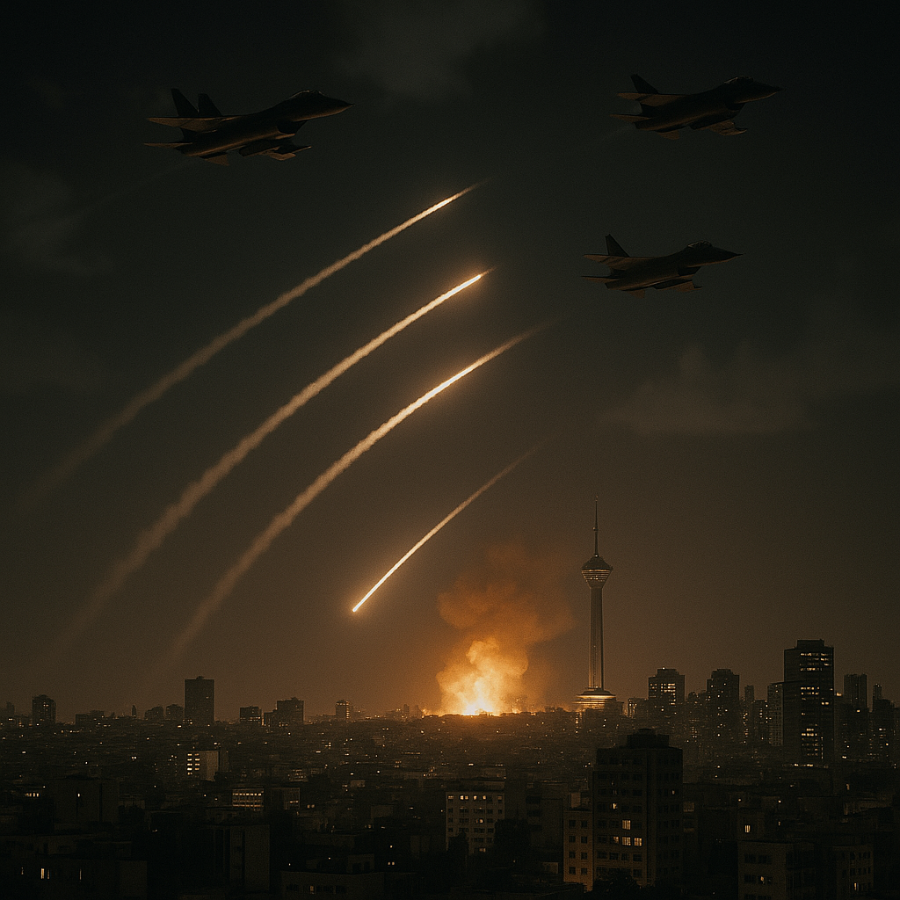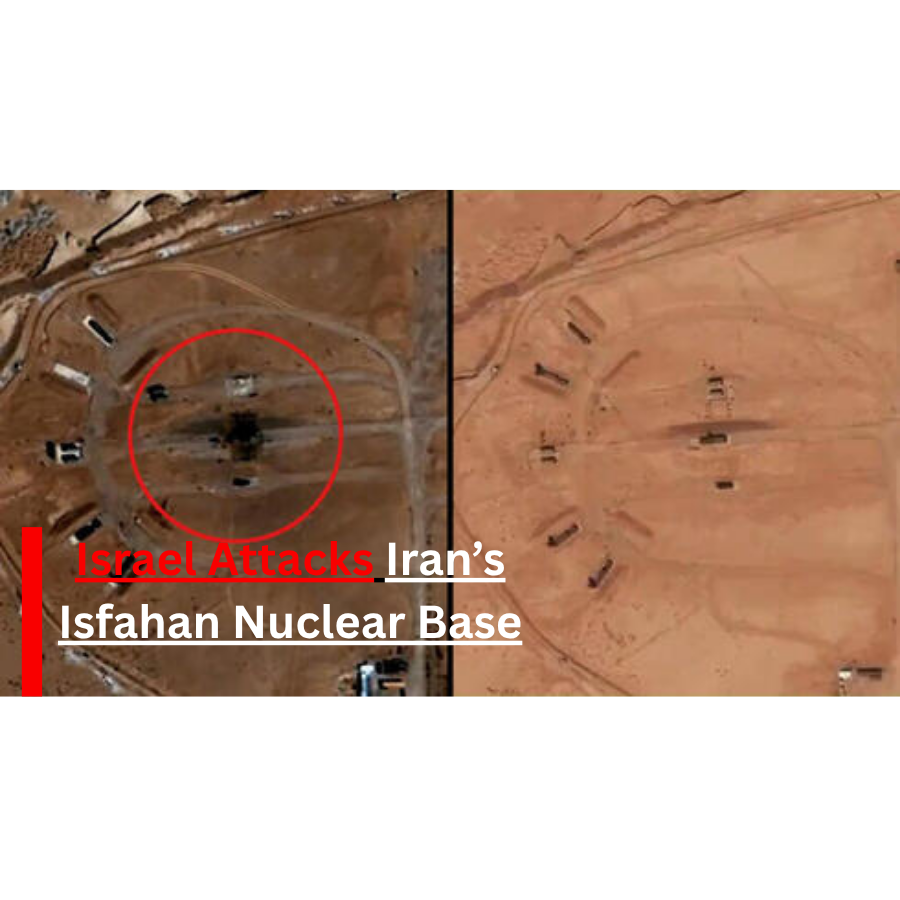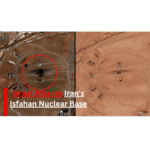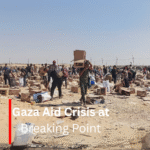Now Reading: Breaking News: Israeli Airstrikes on Khamenei Bunker Escalate Iran-Israel Proxy War 2025
-
01
Breaking News: Israeli Airstrikes on Khamenei Bunker Escalate Iran-Israel Proxy War 2025
Breaking News: Israeli Airstrikes on Khamenei Bunker Escalate Iran-Israel Proxy War 2025

On June 18, 2025, the Iran-Israel Proxy War reached a critical turning point when Israeli missiles reportedly struck a high-security underground bunker in Tehran’s Lavizan district, believed to be directly connected to Iran’s Supreme Leader, Ayatollah Ali Khamenei. According to unconfirmed intelligence sources, the airstrike was part of a targeted operation aimed at Iran’s senior leadership.
While Iranian state media has denied any casualties involving Khamenei, several independent and Western intelligence outlets have suggested he may have been critically injured or eliminated in the strike. The Iranian government has not released any recent footage or official statement from Khamenei, further fueling speculation. If confirmed, this would mark the most dramatic escalation in the Iran-Israel conflict to date, potentially destabilizing Iran’s power structure and triggering regional fallout.Read more about the global market impact of Middle East tensions.
The Rising Tension in the Iran-Israel Proxy War 2025
The Iran-Israel Proxy War 2025 has escalated significantly, with both nations avoiding direct confrontation but engaging in covert operations, cyber warfare, and support for militias. Recent events, such as the direct Israeli airstrikes on Tehran, signal a shift toward more direct military involvement, increasing the risk of a full-scale Israel War 2025.For more on the impact of global oil prices due to regional instability, read our article on Crude Oil Prices in 2025.
Key Escalations in Recent Years:
- Israeli cyberattacks on Iranian nuclear infrastructure
- Iran’s funding of Hezbollah and Hamas
- Missile exchanges in Syria and Iraq
The June 18 attacks represent one of the most direct and bold actions yet, increasing fears of full-blown Israel war engagement.
June 18 Attack: Israeli Airstrikes Target Khamenei Bunker in Tehran

On June 18, 2025, Israeli fighter jets carried out precise airstrikes on a fortified underground bunker in Tehran, connected to Ayatollah Khamenei. This attack, marking a significant escalation in the Iran-Israel Proxy War, could have far-reaching consequences, as it targets one of the most secure locations within Iran’s national security apparatus.Learn about the strategic implications of such military strikes on global security.
Known Facts:
- The strike used bunker-penetrating munitions
- Satellite images confirm deep structural damage
- Iran initially denied leadership casualties but later confirmed limited structural losses
The target is believed to be a command bunker connected to Iran’s national security apparatus and Ayatollah Khamenei’s emergency shelter.
Karaj Explosion: Part of a Larger Israeli War Strategy?
In the wake of the Israeli airstrikes, the explosion in Karaj may be a part of a larger Israel War 2025 strategy, targeting Iran’s military-industrial facilities. Though initially attributed to a gas leak, experts suggest it could have been a targeted strike aimed at disrupting missile and chemical weapons manufacturing in the region.
Strategic Speculation:
- Possible Israeli drone strike
- Target: missile manufacturing or chemical weapons storage
- Coincided with electronic interference near Karaj
Ayatollah Khamenei: A Key Target in the Iran-Israel Proxy War

The Iran-Israel Proxy War 2025 has reached a critical juncture with Israel’s direct targeting of Ayatollah Khamenei, the central figure of Iran’s military strategy and nuclear ambitions. This strategic move not only aims to disrupt Iran’s leadership structure but also sends a clear message to Tehran regarding the international community’s growing impatience with Iran’s regional provocations.
Why He Was Targeted:
- Symbolic strike on the core of Iranian leadership
- Disruption of Iran’s chain of command
- Dissuasion against further regional provocations
Tehran and Karaj: Strategic Sites in the Iran War 2025
In Iran War 2025, both Tehran and Karaj are pivotal. Tehran, the political and military heart of Iran, houses key defense and national security infrastructures. Karaj is strategically important for its military-industrial sites involved in missile and drone production, making it a key target in Israel’s broader strategy.
Iran’s Retaliation Strategy in the Israel War 2025
Following the airstrikes, Iran’s response in the Israel War 2025 has been swift, with state media pledging severe retaliation. The deployment of Revolutionary Guards and the positioning of ballistic missiles in strategic areas highlight Iran’s readiness for broader military action in the ongoing conflict.
Israel’s Preemptive Strike Justification in the Iran-Israel Proxy War
Israel’s preemptive strike in the Iran-Israel Proxy War 2025 was based on solid intelligence regarding an impending missile threat from Iran. Using stealth aircraft and precision targeting, Israel sought to neutralize this threat before it could reach Israeli soil, thereby minimizing the risk of a full-scale conflict.. The use of stealth aircraft and precision targeting further underscores Israel’s defensive strategy, which aims to thwart Iran’s missile capabilities before they can reach Israeli soil.
Tactical Elements:
- Use of stealth aircraft to avoid radar
- Precision targeting through satellite intel
- Cyber warfare to disable Iranian communications
Israel claims the operation was “defensive and necessary.”
Timeline of the Iran War 2025 and Key Proxy Clashes
The Iran War 2025 has built on decades of escalating tension, including Israel’s 2006 war with Hezbollah and the 2021 sabotage of Iran’s Natanz facility. The June 2025 airstrikes on Tehran and Karaj mark a decisive turning point, deepening the conflict and the risk of further proxy clashes.
This proxy war is intensifying with fewer buffers left.
Middle East Proxy Wars: Impact of Iran-Israel Tensions
The Iran-Israel Proxy War 2025 has created ripple effects across the Middle East, from Israeli airstrikes in Syria to missile attacks from Yemen, the conflict is spreading, involving other regional powers and risking broader escalation in the Iran War 2025. From Israeli airstrikes in Syria to missile attacks from Yemen, the conflict is rapidly expanding, with Iran’s influence in the region playing a critical role in these proxy wars. These clashes could widen the scope of the Iran War 2025, involving more nations.

- Syria: Israeli drone strikes on Iranian bases
- Yemen: Houthi militants firing missiles toward Israel
- Iraq: Israeli operatives allegedly disrupt weapons convoys
These flashpoints risk widening the iran israel proxy war.
Global Reactions to the Iran-Israel Proxy War 2025
The Iran-Israel Proxy War 2025 has drawn significant global reactions. Nations like the USA, Russia, and China have voiced concerns, with heightened discussions about the potential disruptions to global oil supplies and markets. This marks the war’s growing international stakes. Countries like the USA, Russia, and China are weighing in, with calls for de-escalation and concerns about disruptions to oil supply. The resulting volatility in global markets, particularly in oil prices, is a testament to how far-reaching the consequences of the conflict are. Discover more about the impact on global oil prices.
Diplomacy:
- USA: Calls for “calm and dialogue”
- Russia: Accuses Israel of escalation
- China: Warns against disruptions to global oil supply
Oil & Markets:
- Brent crude spikes 6%
- Increased volatility in Middle East stocks
Civilians Caught in the Crossfire of the Iran-Israel War 2025
Civilians in both Iran and Israel are suffering the consequences of the escalating Iran-Israel War 2025. In Iran, blackouts and food shortages are on the rise, while Israelis face constant alerts. Humanitarian organizations are calling for immediate action to protect civilians and alleviate the humanitarian crisis. In Iran, blackouts and food shortages are becoming widespread, while Israelis face constant alerts. The media narrative is fragmented, with different views on Israel’s actions and rising concerns from humanitarian organizations on both sides.
Media Angle:
- Internet restrictions in Iran
- Global media divided on Israel’s strategy
- Humanitarian organizations on high alert
The Future of the Iran-Israel Proxy War 2025: Risk of Full-Scale Conflict
As the Iran-Israel Proxy War 2025 intensifies, the risk of a full-scale military conflict between Iran and Israel grows. The involvement of Gulf nations and disruptions to key shipping routes could have global repercussions, making it imperative for diplomatic solutions to be explored.
- Direct military conflict between nations
- Broader involvement from Gulf countries
- Disruption of Red Sea shipping and oil flow
Conclusion: Is the Iran-Israel War 2025 a Turning Point?
The Iran-Israel War 2025 marks a critical turning point, with Israel’s direct targeting of Ayatollah Khamenei escalating tensions dramatically. As Iran vows retaliation, the region stands on the brink of a full-scale conflict, with both sides locked in a dangerous escalation.




























Pingback: Gaza Aid Crisis 2025: 23 Killed in Israeli Strike Near Food Site | Brainstak News